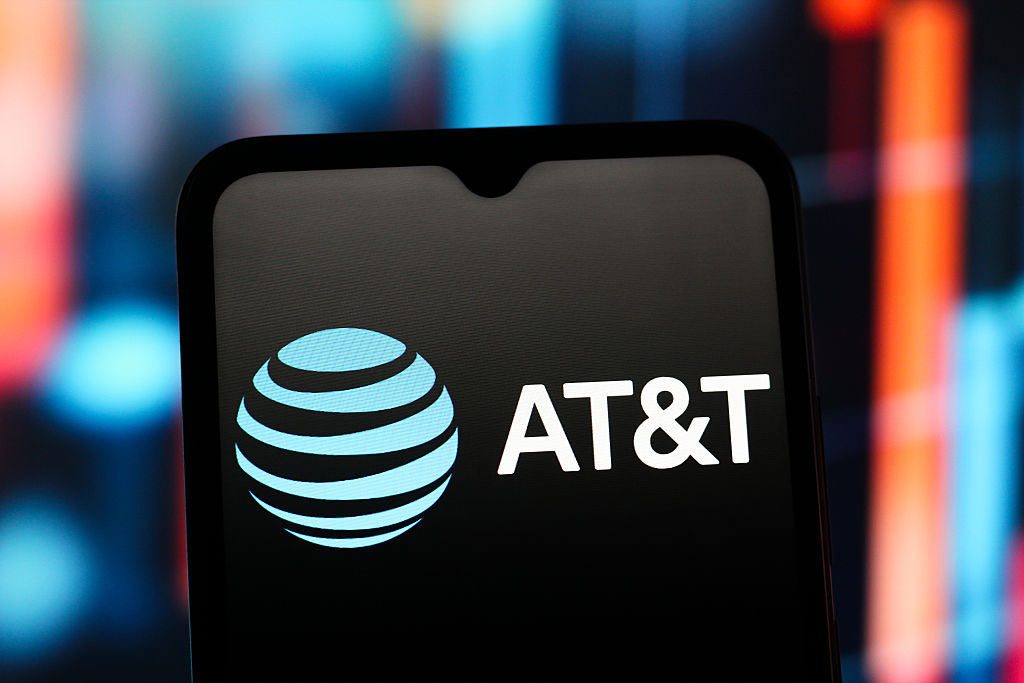$177 Million AT&T Settlement Announced — Are You Eligible for a Payout?
Millions of current and former AT&T customers may be eligible for payments after two 2024 data breaches exposed personal information.

If you are or were an AT&T subscriber, you might be entitled to a payout from the AT&T data breach settlement.
The $177 million AT&T settlement addresses two data breaches that occurred, jeopardizing subscribers’ personal information and leading to financial losses for some. If you were affected, you can still file a claim.
These breaches impacted millions of current and former customers, with sensitive data surfacing on the dark web and being illegally accessed from a third-party cloud platform. We’ll break down the timeline of both incidents, what information was compromised and who qualifies for payments.
From just $107.88 $24.99 for Kiplinger Personal Finance
Become a smarter, better informed investor. Subscribe from just $107.88 $24.99, plus get up to 4 Special Issues

Sign up for Kiplinger’s Free Newsletters
Profit and prosper with the best of expert advice on investing, taxes, retirement, personal finance and more - straight to your e-mail.
Profit and prosper with the best of expert advice - straight to your e-mail.
AT&T data breach timeline and what was exposed

According to the settlement website, AT&T experienced two data breaches in 2024.
March 30, 2024
AT&T announced a breach involving a data set from 2019 or earlier that had been released on the dark web. About 7.6 million current and 65.4 million former account holders were affected.
Exposed information included names, addresses, telephone numbers, email addresses, dates of birth, account passcodes, billing account numbers and Social Security numbers.
July 12, 2024
AT&T disclosed a second breach in which data was illegally downloaded from a third-party cloud platform hosted by Snowflake. This incident involved telephone numbers of current and former customers, as well as the numbers of people they contacted, plus call counts and durations.
AT&T has agreed to pay $177 million in total to resolve claims stemming from both breaches.
How much you could receive from the $177 million AT&T settlement
AT&T subscribers may be eligible for certain payments depending on how they were affected by the data breaches.
If you were affected by the first data breach, you may be eligible for one of the following:
- A documented loss cash payment of up to $5,000. You will need to provide receipts proving that your loss is fairly traceable to the data breach.
- A tier 1 cash payment from the settlement fund. Tier 1 payments are for members whose Social Security numbers were included in the incident.
- A tier 2 cash payment from the settlement fund. Tier 2 payments are for members who had data included in the incident, but whose Social Security numbers were not jeopardized.
If you were affected by the second data breach, you may be eligible for one of the following:
- A documented loss cash payment of up to $2,000. You will need to provide receipts proving that your loss is fairly traceable to the data breach.
- A tier 3 cash payment from the settlement fund.
The amount that you will receive from a tiered cash payment will depend on how many people file a claim and become part of the class-action settlement.
If you were affected by both incidents, you may be able to claim payments from both categories. If you’re claiming a documented cash loss for both incidents, you can’t use the same receipts to prove both losses.
How to tell if you were affected by the AT&T data breaches

If you were affected by one or both of the data breaches, you may have already received an email or postcard from AT&T. That email or postcard contains your class member ID number, which you’ll need to file a claim.
If you’re unsure if you were involved or if you haven’t received your class member ID number, you can use the “Contact Us” option on the settlement website to chat with support. You can also call 833-890-4930 for more information.
How to file a claim
To receive a payout from the settlement, you must file a claim. If you do nothing, you will sacrifice any benefits from the settlement and will give up your rights to sue AT&T on your own.
You have until November 18 to file a claim. You can submit a claim form on the settlement website, or you can mail it. Mailed claims must be postmarked by November 18, 2025.
To file a claim, you will need your class member ID number, as well as your full name, email address and AT&T account number.
If you’re filing a claim for a documented loss cash payment, you will need to submit receipts documenting the loss.
How to opt out of the AT&T data breach settlement
Keep in mind that if you enroll in the AT&T data breach settlement, you will not be able to file your own lawsuit against AT&T. If you’re planning to file a lawsuit, it is best to consult with your lawyer. Your request to opt out must be mailed and postmarked by October 17, 2025.
Related Resources
Profit and prosper with the best of Kiplinger's advice on investing, taxes, retirement, personal finance and much more. Delivered daily. Enter your email in the box and click Sign Me Up.

Paige Cerulli is a freelance journalist and content writer with more than 15 years of experience. She specializes in personal finance, health, and commerce content. Paige majored in English and music performance at Westfield State University and has received numerous awards for her creative nonfiction. Her work has appeared in The U.S. News & World Report, USA Today, GOBankingRates, Top Ten Reviews, TIME Stamped Shopping and more. In her spare time, Paige enjoys horseback riding, photography and playing the flute. Connect with her on LinkedIn.
-
 4 Great Tools to DIY Your Own Financial Plan
4 Great Tools to DIY Your Own Financial PlanSmart Savings Several tools picked out by Kiplinger that DIYers can use to make their own financial plan.
-
 The 7-Month Deadline That Sets Your Lifetime Medicare Premiums
The 7-Month Deadline That Sets Your Lifetime Medicare PremiumsUnderstanding Medicare enrollment is crucial, as missing deadlines can lead to permanent late enrollment penalties and gaps in coverage.
-
 Retirees Living in Portugal: You Need a Post-NHR Tax Strategy
Retirees Living in Portugal: You Need a Post-NHR Tax StrategyWhen your 10-year Non-Habitual Resident tax break ends, you could see your tax rate soar. Take steps to plan for this change well before the NHR window closes.
-
 4 Great Tools to DIY Your Own Financial Plan
4 Great Tools to DIY Your Own Financial PlanSmart Savings Several tools picked out by Kiplinger that DIYers can use to make their own financial plan.
-
 The 7-Month Deadline That Determines Your Lifetime Medicare Premiums
The 7-Month Deadline That Determines Your Lifetime Medicare PremiumsUnderstanding Medicare enrollment is crucial, as missing deadlines can lead to permanent late enrollment penalties and gaps in coverage.
-
 Should You Renew Your CD?
Should You Renew Your CD?With rate cuts impacting earnings, we examine if now is a wise time to renew CDs.
-
 Where to Store Your Cash in 2026
Where to Store Your Cash in 2026Set yourself up for success with these strategies.
-
 I'm a Financial Adviser: The Fed's Rate Cuts Could Have Impacts You Might Not Anticipate
I'm a Financial Adviser: The Fed's Rate Cuts Could Have Impacts You Might Not AnticipateUnderstanding how lower interest rates could impact your wallet can help you determine the right financial moves to make.
-
 My Teen Crashed His Car, and Now Our Insurance Has Tripled. What Now?
My Teen Crashed His Car, and Now Our Insurance Has Tripled. What Now?Dealing with the costly aftermath of a teen car accident is stressful. Here are your options for navigating it.
-
 My First $1 Million: Retired In-House Corporate Lawyer, 74, Midwest
My First $1 Million: Retired In-House Corporate Lawyer, 74, MidwestEver wonder how someone who's made a million dollars or more did it? Kiplinger's My First $1 Million series uncovers the answers.
-
 I'm an Insurance Pro: Going Without Life Insurance Is Like Driving Without a Seat Belt Because You Don't Plan to Crash
I'm an Insurance Pro: Going Without Life Insurance Is Like Driving Without a Seat Belt Because You Don't Plan to CrashLife insurance is that boring-but-crucial thing you really need to get now so that your family doesn't have to launch a GoFundMe when you're gone.